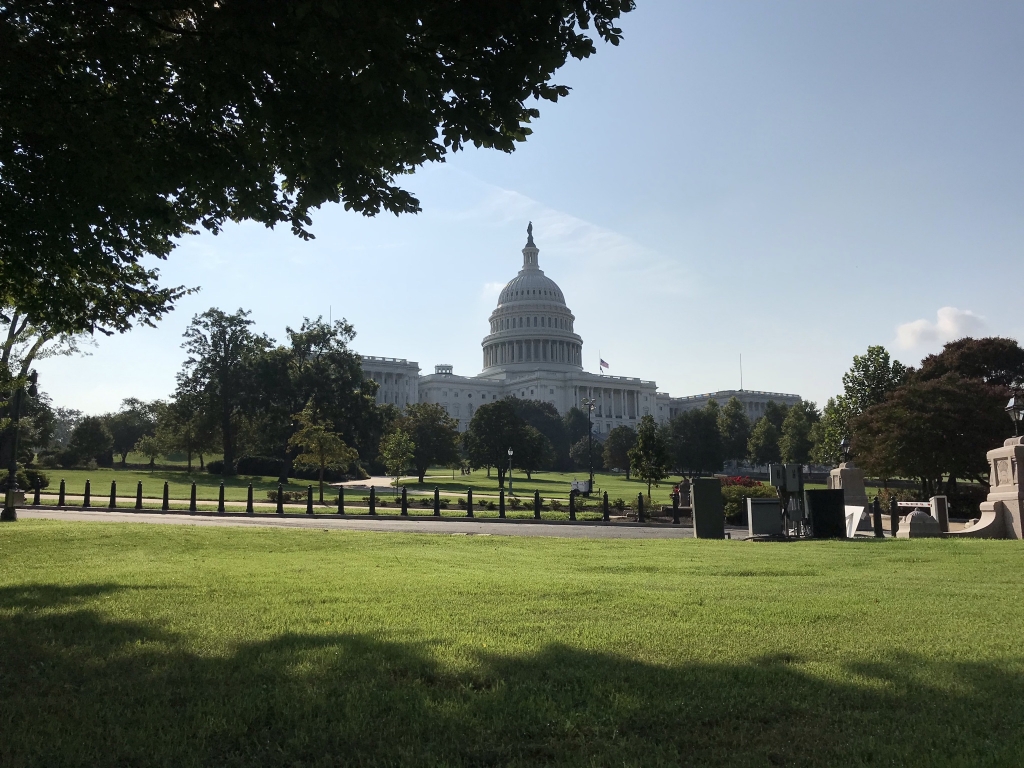By the time I took this trip, my sojourn in Maryland had lasted over a month. I had visited Baltimore, Philadelphia, and New York City. I had another New York trip lined up for Labor Day Weekend, so the weekend between the two New York trips I set aside for our nation's capital, Washington, DC.
As with New York, I'd been to DC before, but only on trips with my parents in which we'd spend the nights across the Potomac River in Virginia, ride the Metro in from the Tysons Corner station, look at some government buildings, monuments, and Smithsonian museums, and then ride the Metro back out before nightfall. This time I really wanted to experience the city like I've been experiencing others, hitting tourist hotspots and museums but also patronizing local restaurants, cafés, and bars, while staying the night in the city and not outside it.
Saturday, August 28, 2021
As usual, I rode a train into the city. Unlike with Philly and NYC, I didn't use Amtrak; DC was close enough that I could use Maryland's commuter rail system, MARC. A ride on MARC from the BWI airport's rail station to Washington Union Station is only $8 and lasts 40 minutes.
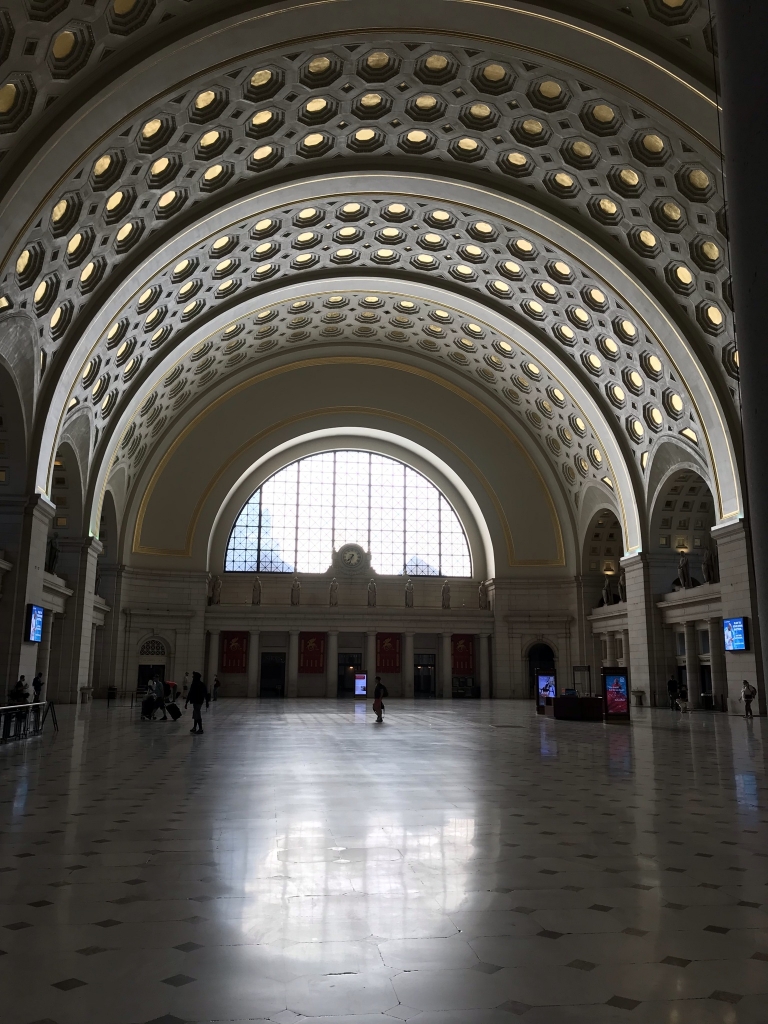
Washington Union Station has one of the more impressive train halls I've seen.
At the station I had a coffee and bought a "farecard," as it's called, for DC's subway system, the Metro. From there I took a long walk east, past the Capitol. It was still kind of early and the expected crowds of tourists hadn't quite shown up yet.
Finally I reached the National Mall, that huge green space stretching from the Washington Monument to the Capitol which is lined by Smithsonian museums. Which museum to go in first? I had to see the Air and Space Museum. But before I could go in, I found something outside which I'd always wanted to see implemented somewhere, a scale model of the solar system. We've all seen representations of our solar system in high school science texts and such, but none of them are to scale because the planets so vary in size and are so far apart it would be impossible to represent the scale without taking up a lot of space. The fine folks at the Smithsonian had the space to do it.
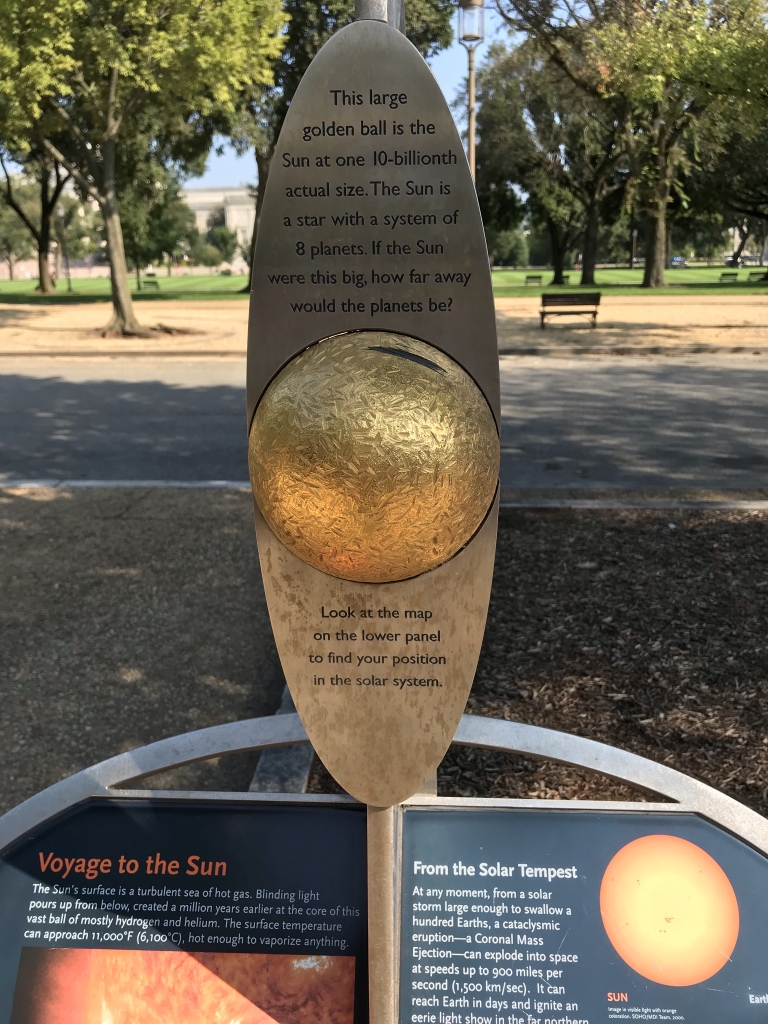
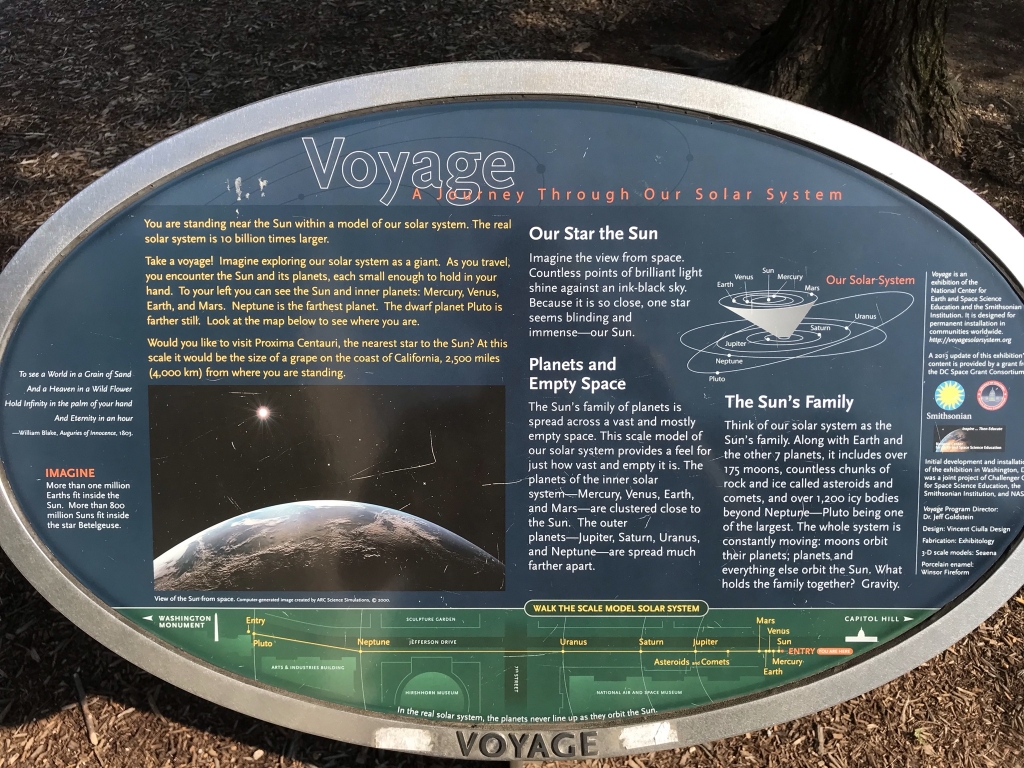
Up above you see the representation of our Sun; it's about the size of a grapefruit. Now, just to give you an idea of how empty outer space is, read the plaque. "Would you like to visit Proxima Centauri, the nearest star to the Sun? At this scale it would be the size of a grape on the coast of California, 2,500 miles (4,000 km) from where you are standing." Also note the map across the bottom, showing where all the planets are; this model takes up quite a long stretch.
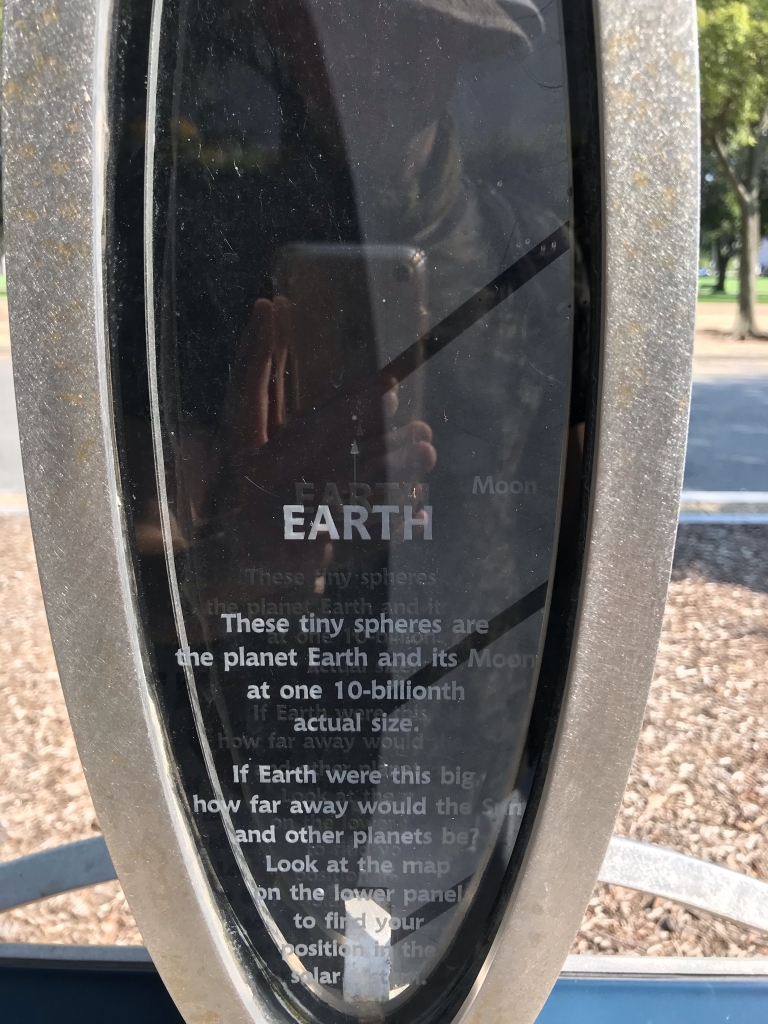
Now here's our home planet in this model of the solar system. "Earth" here is smaller than a house fly, and I can't even tell which one of those specks is our moon.
National Air & Space Museum
The museum opened at 10 and I was a few minutes early, so I had to stand in a line outside for a little bit. Smithsonian museums are all free of charge, which is great. I still had to go through a security checkpoint at the entrance, and of course these days face masks are required.
Unfortunately, I couldn't experience the whole museum. A great deal was closed for renovation at that time, and the IMAX theater was also not operating.
When you walk into the Air & Space Museum, you first see two huge halls in the front of the building, in which several historic aircraft and spacecraft, some of which are replicas, are hanging.
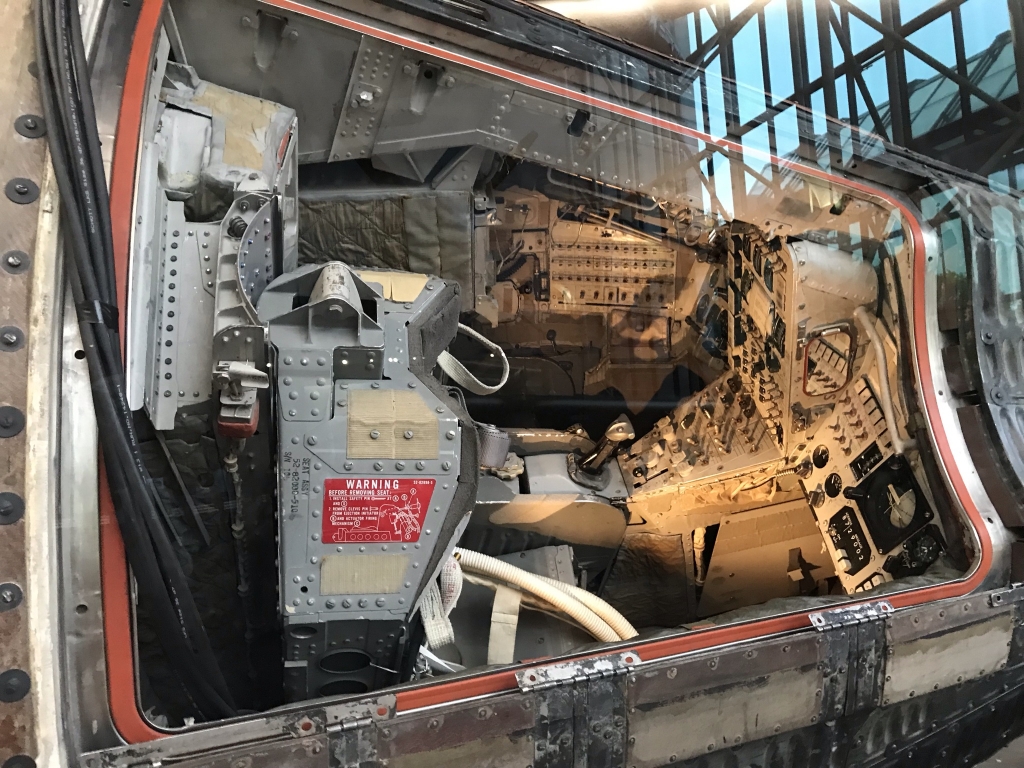
Take a look inside Gemini 4, the two-seat capsule flown by James McDivitt and Ed White in 1965. White got a little more space when he took a walk outside, the first time an American astronaut had done such a thing.
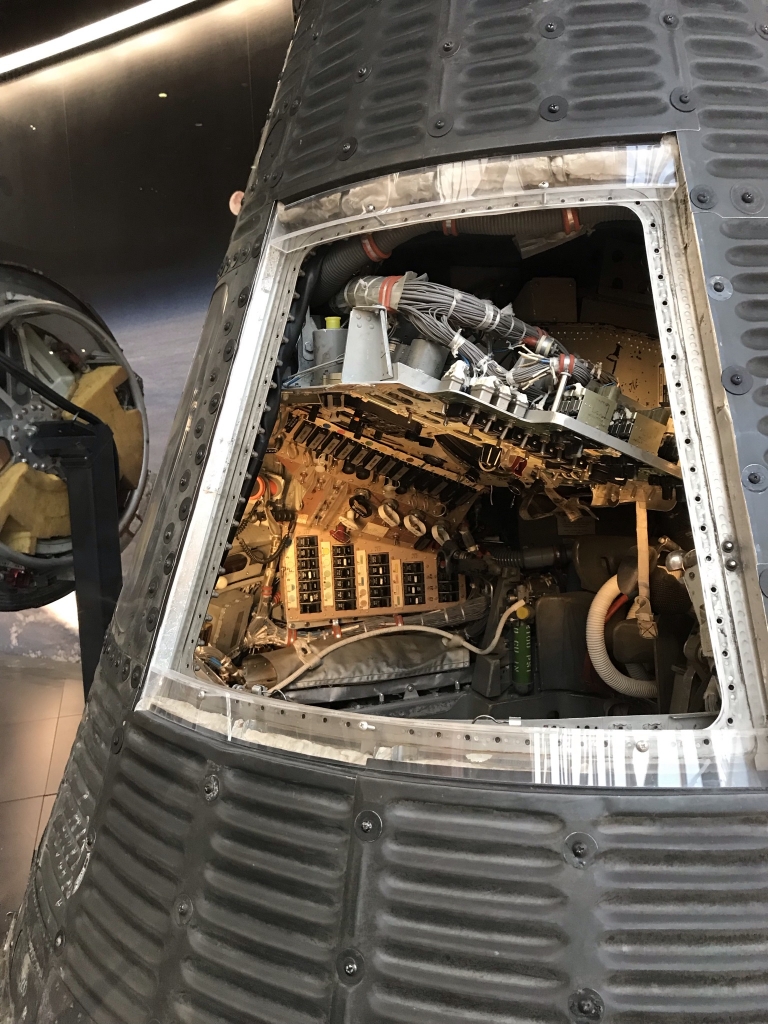
Here you can see in the cramped cockpit of Friendship 7, the Mercury capsule in which John Glenn orbited Earth in 1962.

This is a representation of the Apollo-Soyuz Test Project which happened in 1975. The American and Soviet spacecraft took off on the same day and docked in orbit. That flight was significant because, after the heady days of the space race, this was the first time the two Cold War superpowers actually cooperated. The crews included American Deke Slayton, one of the original Mercury Seven who had gotten grounded for medical reasons, and Russian Alexei Leonov, the first man to do a spacewalk a decade before this.
Of course, this can't be the real thing, which we know because the Apollo's service module (the cylindrical part with the engine) and the front and back thirds of the Soyuz all burned up in reentry. So naturally I looked it up on Wikipedia. The Apollo command and service modules you see here are real, but were only used for testing in the Skylab program and never flew in space, while the Soyuz is a model constructed for use in this display. If you want to see the real Apollo command module, you must go to the California Science Center in Los Angeles, while the real Soyuz descent module (the middle third) is in the RKK Energiya Museum in Korolev, Russia.

Now we're inside America's first space station, Skylab. It hosted three crews doing various science experiments in 1973 and 1974, spent the next five years deserted in Earth orbit, and finally burned up in the atmosphere in 1979. What you see here is Skylab B, a functionally identical backup Skylab that we can walk through.
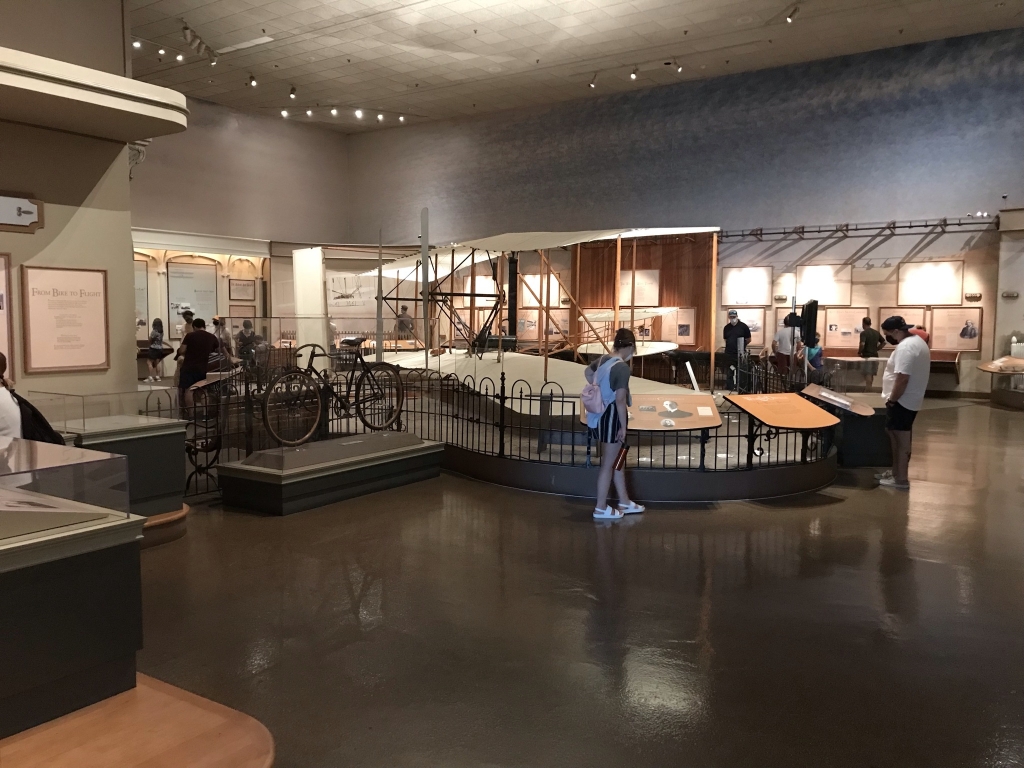
Now here was a fascinating room you can spend a lot of time in. This is entirely devoted to the Wright Brothers and their world-changing invention. That's their original Wright Flyer, right there, taking up most of the space. They were bicycle makers in Dayton, Ohio, where they assembled their experimental aircraft, but to actually test it they took it to the beach at Kitty Hawk, North Carolina, which was a couple days away by train.
Even with about half the museum closed, there was still plenty of exhibition halls to get lost in. One was all about the history of navigation, showing centuries' worth of instruments developed to help sailors, and later airplane pilots, figure out where in the world they were and which direction they were headed. Another hall was all about the Space Shuttle, displaying mock-ups of the main engines, some outdated instruments used in the cockpits in the earlier years, and several astronauts' flight suits behind glass. There was also another about the orbiting instruments like the Cosmic Background Explorer that gathered all the data and evidence of the Big Bang which kicked off our universe.
After the Air & Space Museum I walked through the National Gallery of Art's sculpture garden and ate lunch at a neighboring restaurant, Pavilion Café.
I only had time to visit one more Smithsonian museum. Natural History and American History were right next to each other. I'd already been through one natural history museum in NYC a week earlier and would be revisiting it a week later, so I went with American History.
National Museum of American History
Like the other Smithsonian museums, this place is huge, and unlike Air & Space, the whole thing is open so a visit that covers the whole thing is going to take several hours, several hours which I didn't have that day. I tried to see as much as I could, but there just wasn't enough time.
The first hall I went through was about American innovation, showcasing all the world-changing inventions that have come out of our country, such as computers...
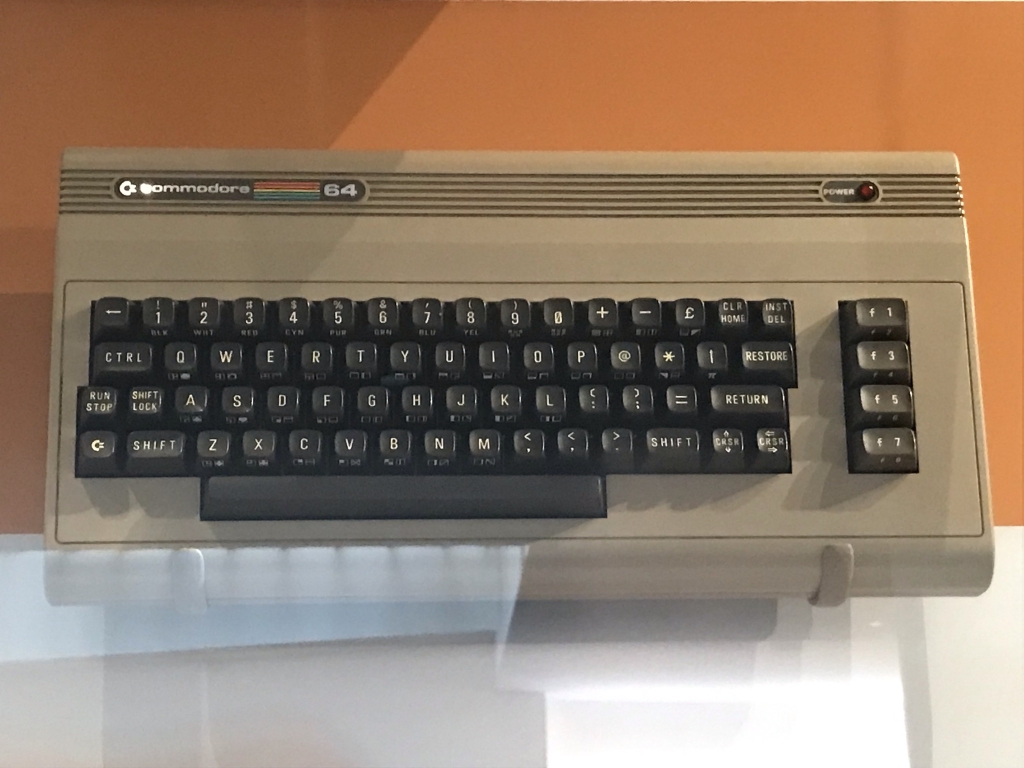
I am a bit of a retrocomputing enthusiast, so I had to get a pic of this venerable part of computing history, a Commodore 64!
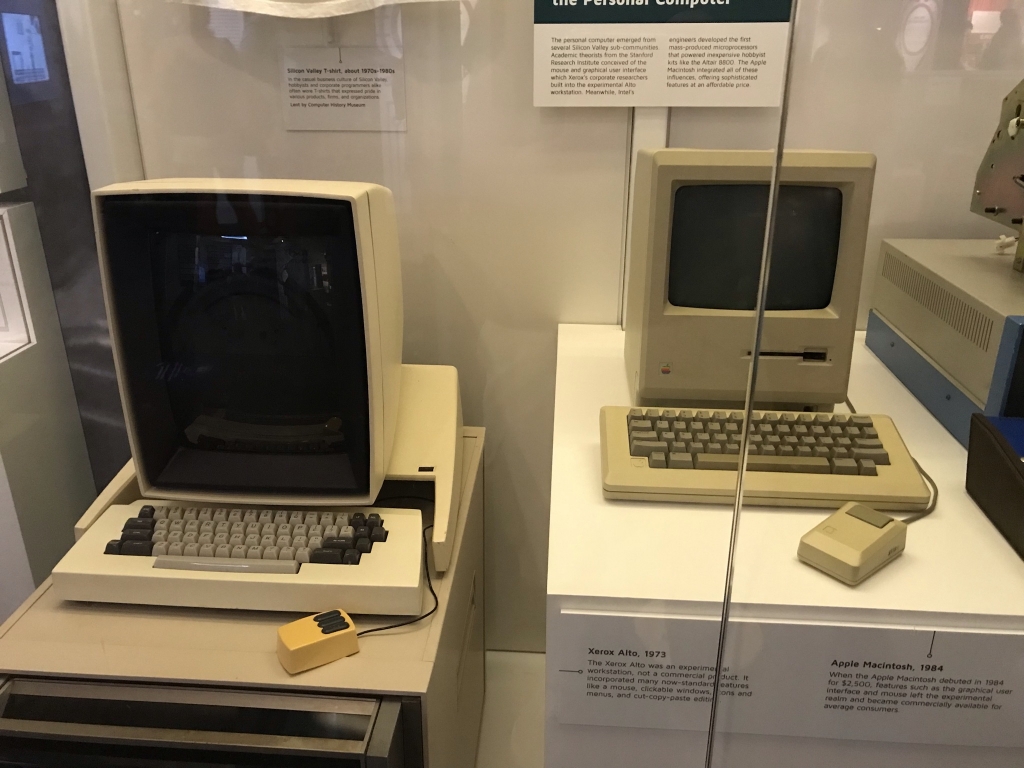
The machine on the left is a Xerox Alto, which had a graphical user interface and mouse support...way back in 1973! It was too ahead of its time for its time, and didn't get much use outside of labs and universities in Silicon Valley, but Steve Jobs and his people at Apple got to see demonstrations of its tech at Xerox PARC and used what they learned in designing the first Macintosh, seen on the right.
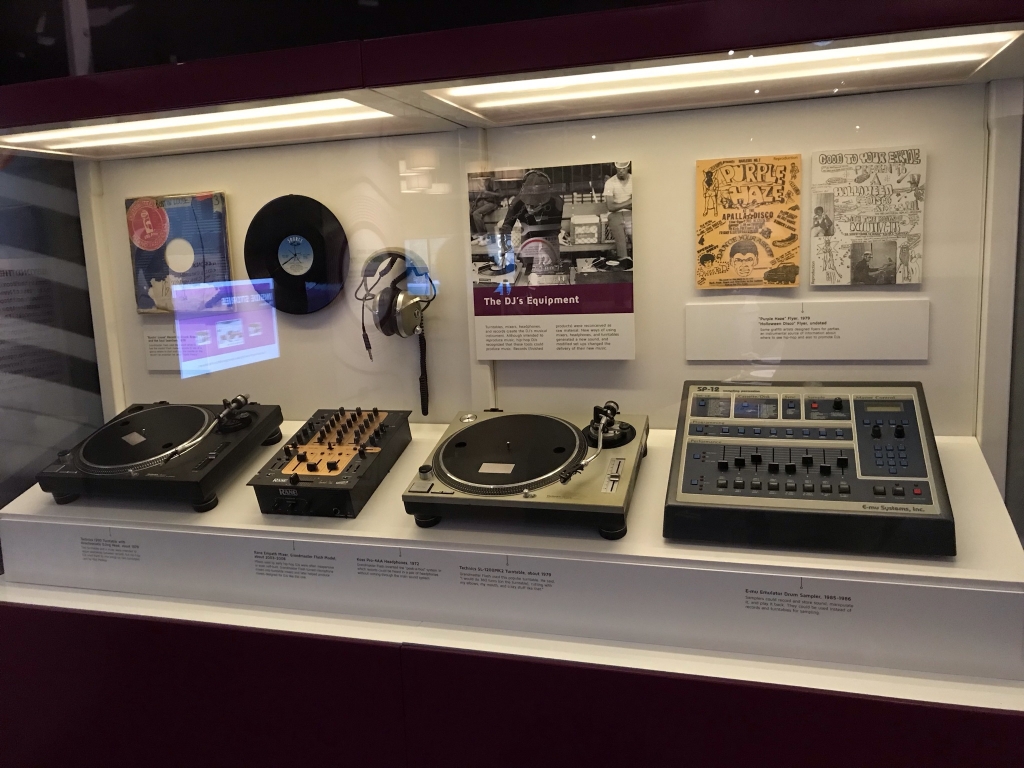
The art of DJing, beatmatching, and scratching was born in the Bronx to such pioneers as DJ Kool Herc and Grandmaster Flash.
Another hall focused on specific towns and regions of the US which are known for their own innovations and discoveries. Hollywood, California is one we all know about, which birthed the film industry as we know it. But there are other places I was not aware of. One that I learned about was Medical Alley in Minnesota, a region stretching from Minneapolis/St. Paul to Duluth, including the University of Minnesota and the Mayo Clinic, which was a place of medical technology innovation in the 1950s. The life-saving device we know as the Pacemaker, which keeps faulty hearts beating, was invented there. And then there was Hartford, Connecticut, where in the 1850s Samuel Colt pioneered the mass manufacture of guns with interchangeable parts, which had previously been made by hand one by one. More recently, Fort Collins, Colorado has become a center of green energy tech.
There's also a hall which is all about advertising, where you can learn about all the subtle ways advertisers twist the truth to get you to buy something or change your behavior.
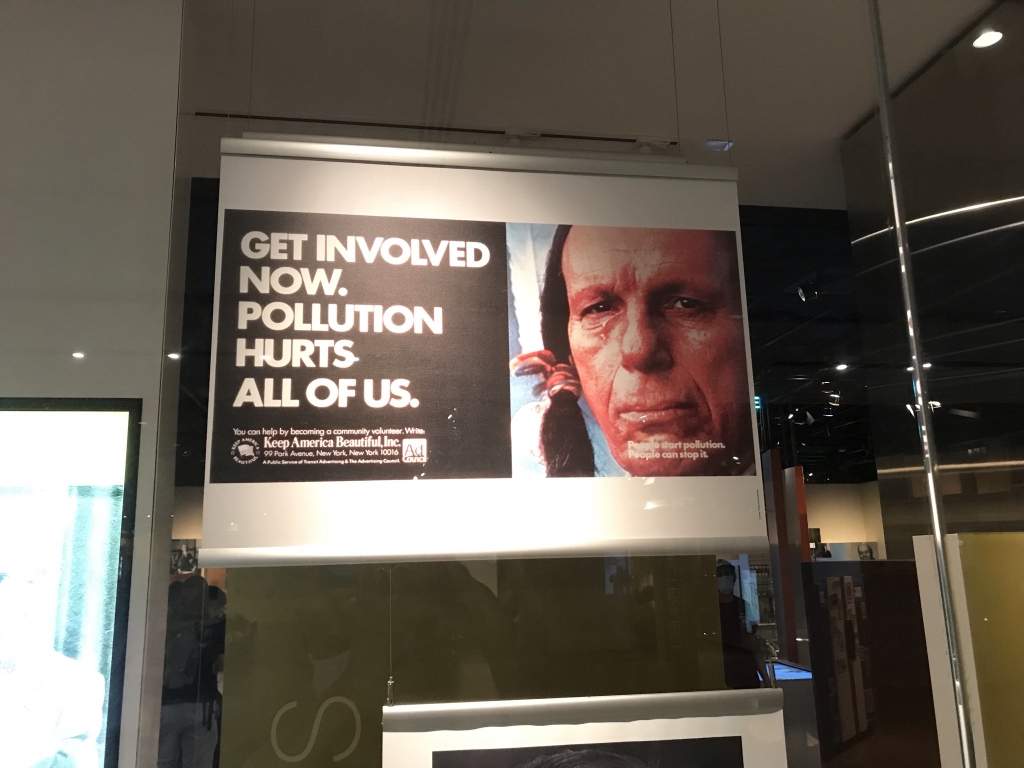
A real study in bullshit is the iconic "crying Indian" ad. Not only was the "Indian" really an Italian-American who used his dark skin and hair to get roles playing natives in western movies, but the outfit who bankrolled the ad, Keep America Beautiful, was really a front group for the single-use plastics industry who knew their products were environmentally unfriendly and were trying to keep critics off their backs.
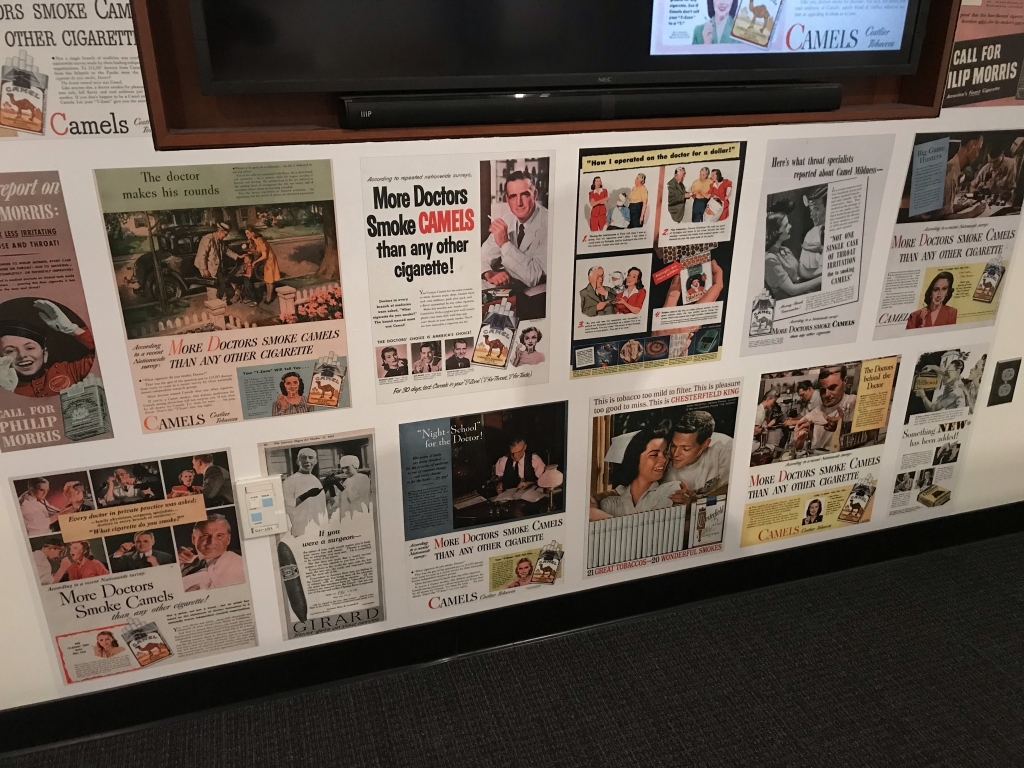
There was once a time when doctors made cigarette ads.
There was so much more I walked through, and I don't want to take up too much space on this one museum, so here's just two more from that day's visit.
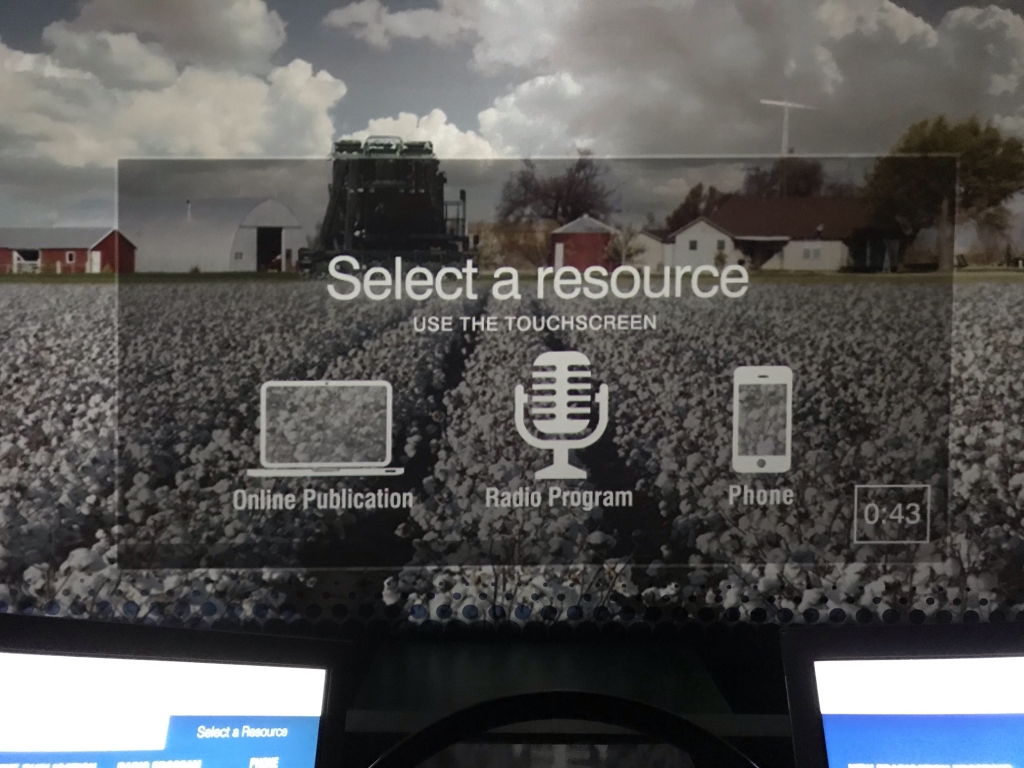
This was an interesting game where you manage a farm, get news from various sources and base your management decisions on what you hear and see the results.
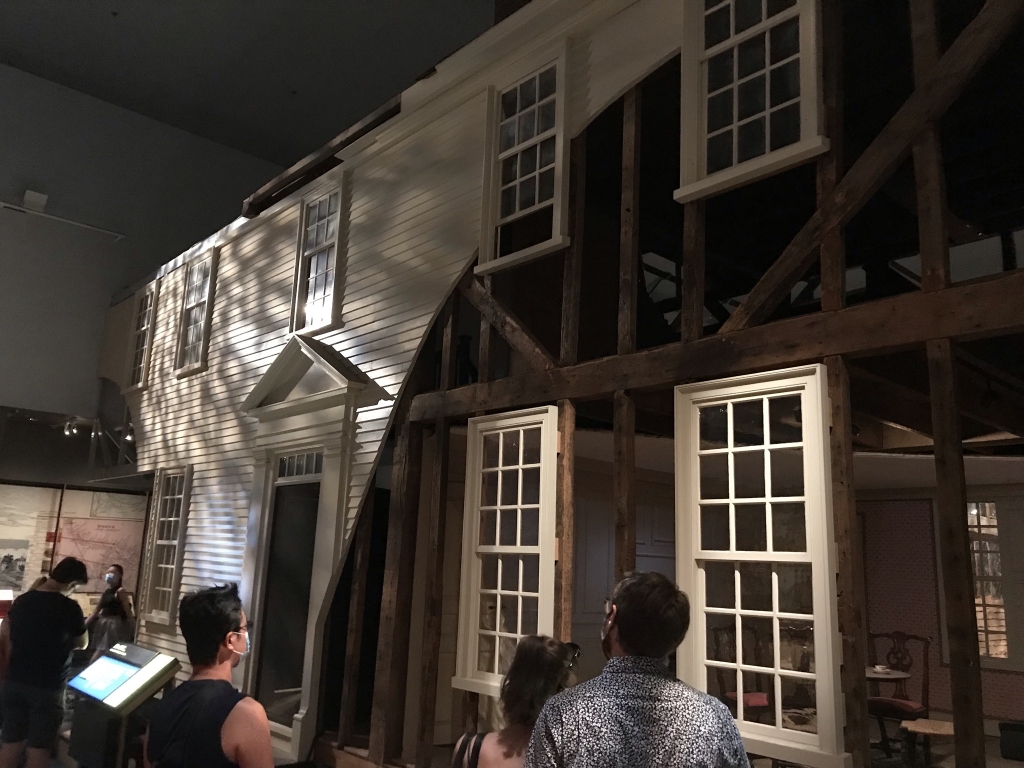
This is an old house that was first built in 1757 in Massachusetts, and stood there for about two centuries, being the home of many different families and getting remodeled and modified many times. All around the house you see signs telling you about the people who lived in the house during every historical era.
Other halls that I went through on that visit were full of more fascinating learning experiences. One focused on the widely differing histories and cultures of every region of the United States, like the British-founded colonies such as Pennsylvania and South Carolina, Dutch New Amsterdam which we now know as New York, New France which included Louisiana, and Spanish New Mexico. Another was all about protest movements and displayed many authentic signs from demonstrations for voting rights, against various wars, for and against abortion, and many other causes.
The museum closed for the day at 5pm, so I had to leave then. Next thing to do would be to check into the hostel and find something to eat for dinner. I already knew what I wanted to eat and it just happened to be down the street from the hostel, on U Street. I rode the Metro there.
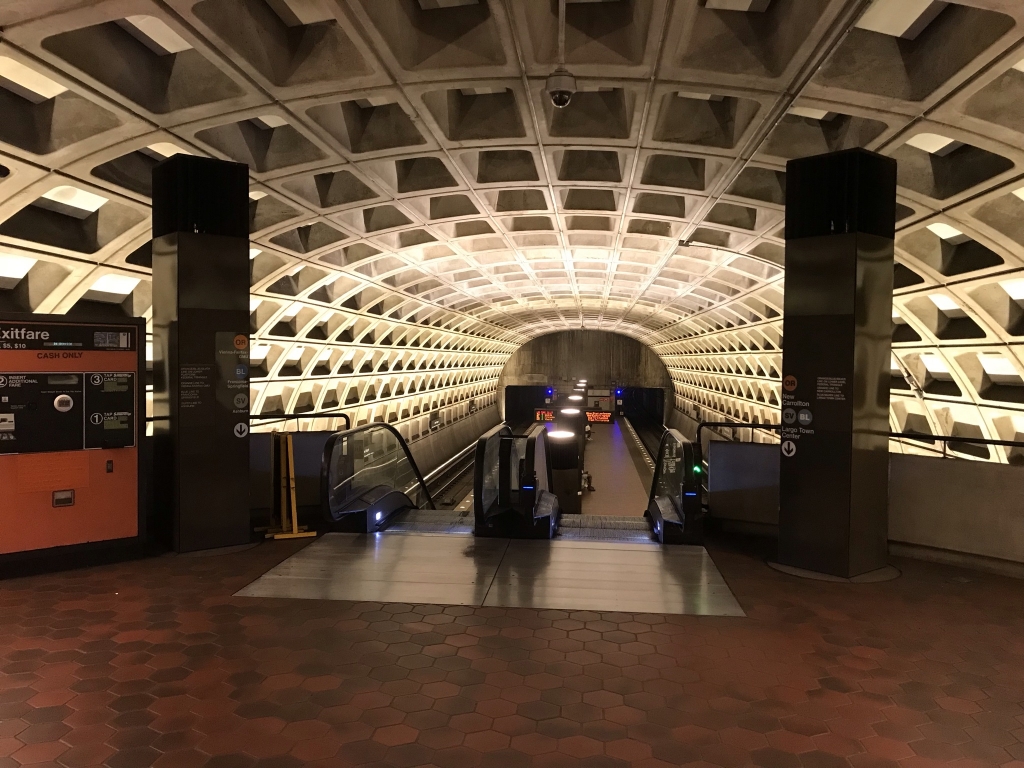
I always liked the way these DC Metro stations were designed.
Like I mentioned at the beginning, I'd been in DC before, but it was always just to see the usual tourist stuff, i.e. government buildings and museums. It's so easy to forget that just behind all that, there's a real city here, where people live. I was seeing this city for the first time.
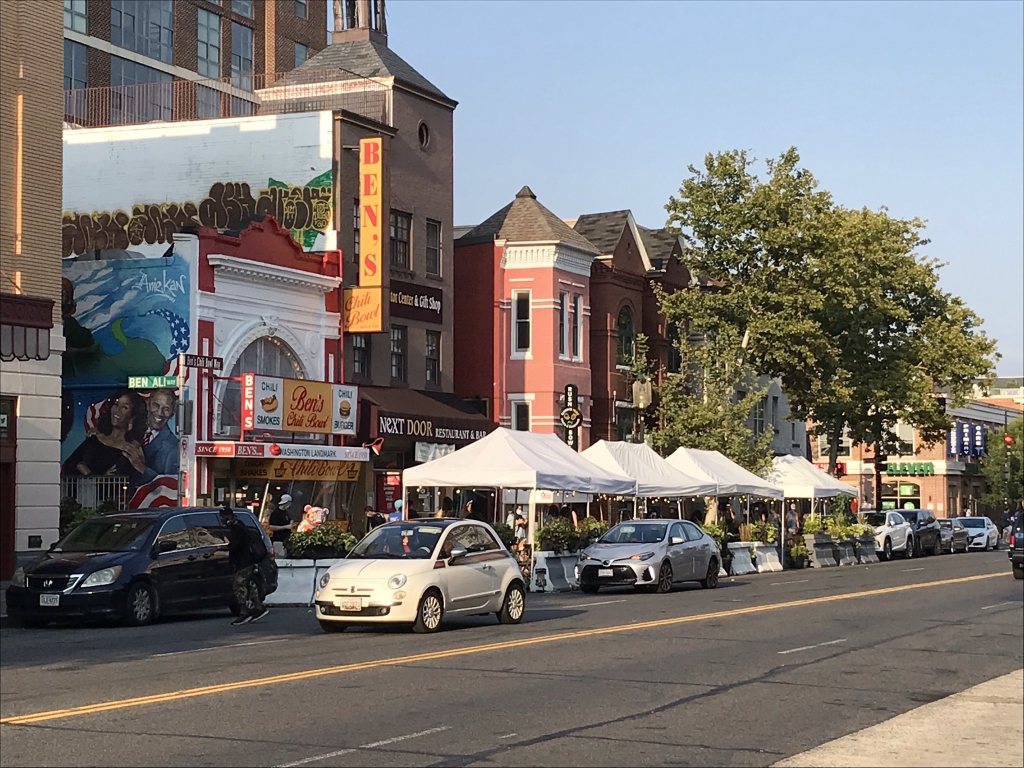
This is U Street. Here you can see a locally famous restaurant, Ben's Chili Bowl. That's where I'd be going for dinner a little later.
After dropping by the nearest 7-Eleven to get a fruit bowl, I checked into my hostel. This place was called Capsule Hostel and there was a reason for that...
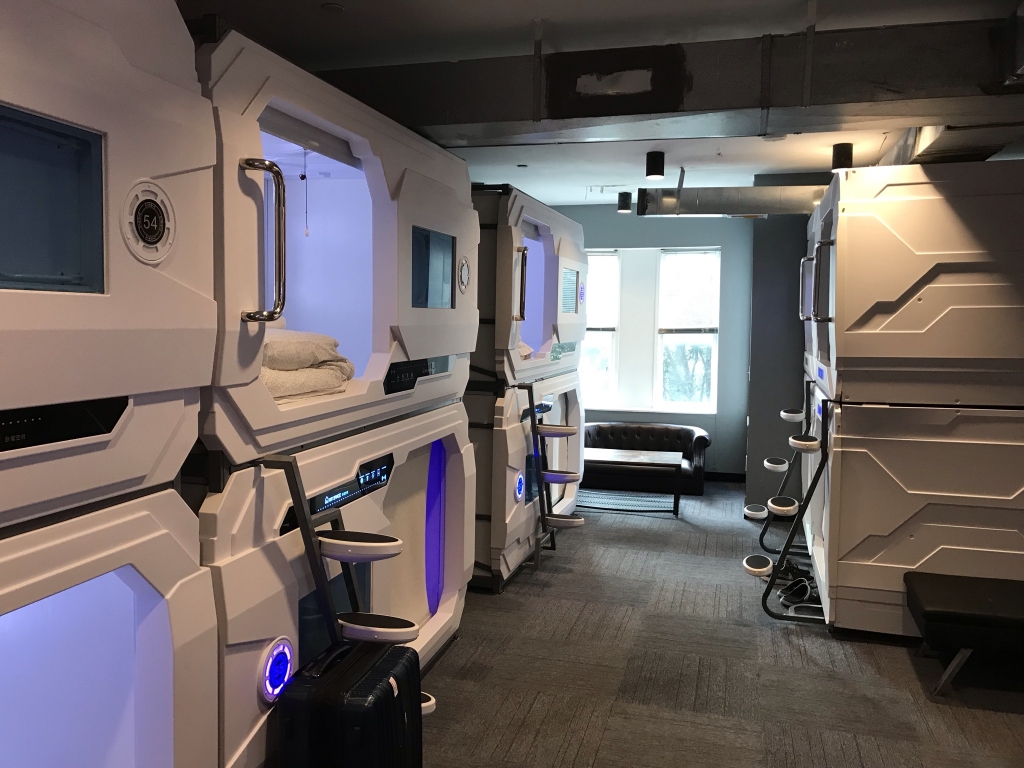
Yeah you get to sleep in these futuristic-looking pods.
I left my stuff in my capsule and walked back down the street to Ben's Chili Bowl. Now, this place is a real DC institution. It was founded back in 1958 by Ben Ali and his wife Virginia. Ben passed away some time ago, but Virginia can still be seen walking around the restaurant today when it's open. There was something specific I wanted for dinner from this place: a chili half-smoke. It seems that a half-smoke, that is, a hot dog made from half pork and half beef and cooked by smoking it, sometimes served with chili, is DC's most famous local food, and Ben's is the most famous place to get one. Because I want to try all the local and regional foods I can wherever I visit, I had to go get a chili half-smoke from Ben's.
It was a nice coincidence that Ben's Chili Bowl was only a short walk down U Street from the Capsule Hostel. The place sure was busy when I was there. All the tables were taken, and I had to wait a little while to order and also to get my food after ordering. Like most famous restaurants, there were a lot of pictures on the walls of celebrities eating there. Eventually I got my chili half-smoke, which I couldn't eat in the restaurant due to the lack of empty tables. While I wouldn't rate it higher than the Philly cheesesteak I had a couple weeks earlier, I was still impressed. I've had plenty of chili dogs before and this was definitely a cut above them all. There's chili dogs and then there's chili half-smokes.
With dinner out of the way, where's the beer at? Only three doors down from Ben's is a place simply called the Saloon. Now this place seriously impressed me. The beer selection was fantastic! The menu was full of German and Belgian beers I hadn't drunk in a while. The first one I had was a Spaten Oktoberfest.
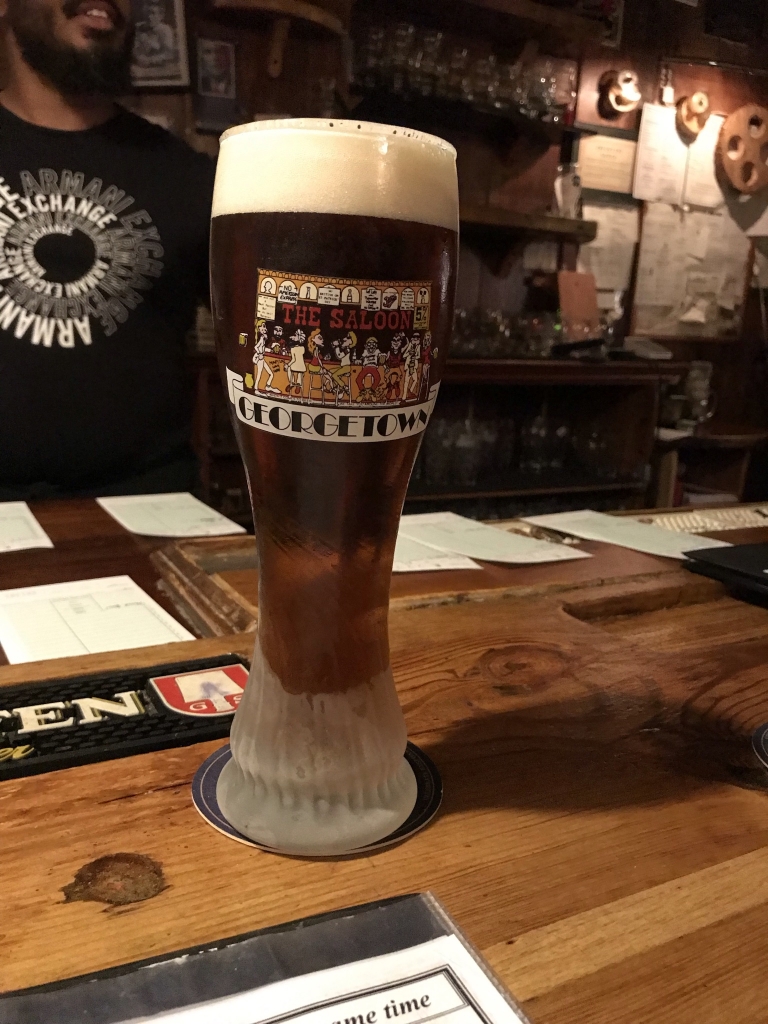
Delicious.
I also had a great Belgian monastery ale, St. Bernardus Abt 12. This is one of my favorite Belgian ales, but it's real strong and so must be sipped slowly. It paired well with the pickled carrot sticks I got on the side.
Yeah...if you like German and Belgian beer and you're in DC, you must go to the Saloon.
I wanted to drink some more, but also see more of the DC nightlife. I took a couple Metro trains to Dupont Circle, a neighborhood named for the roundabout in its center and known for its nightlife. Since I have to go to at least one Irish pub in every city I visit, I decided on Duffy's. While walking there, I saw a coffeeshop called Emissary, where I stopped for an Americano to go. They do make some good coffee at Emissary.
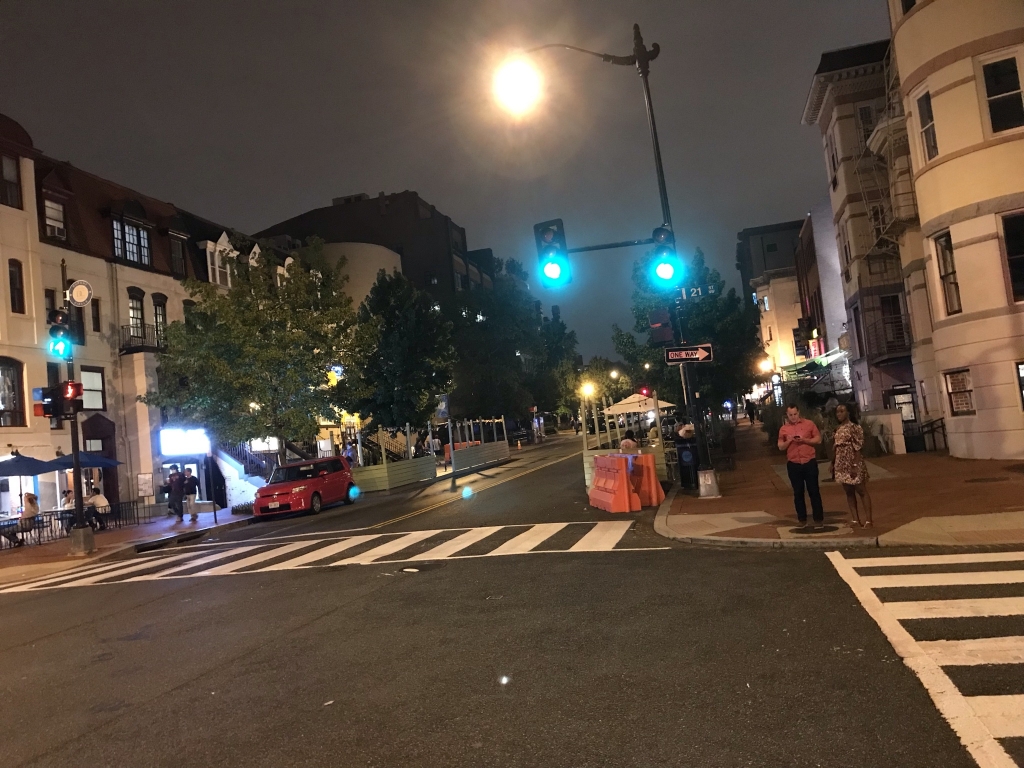
21st and P streets, not too far from Dupont Circle.
At Duffy's I started with a Devil's Backbone Vienna Lager. This I didn't like too much; it may have had "Lager" in the name, but tasted bitter and hoppy like an IPA. What I had after that was much better: Narragansett. This isn't a craft beer; it's what I like to call a legacy beer, an American brew that's been around for over a century. I found it to be a lot smoother than the Devil's Backbone I had before it. Narragansett seems to be only available on the east coast; It's made in Rhode Island, I drank it here in DC, and I've seen it as far south as Charleston, but nowhere in any state that doesn't touch the Atlantic.
I also had an Irish Coffee at Duffy's. They put Bailey's in it, so it wasn't entirely authentic.
The last place I stopped that night was also in the Dupont Circle area, called Sauf Haus. This place was presenting itself as a German Biergarten, though when I showed up on a Saturday night it was a flashy dance club with people queued up outside and a bouncer checking everyone's IDs. They did have a good German beer selection, though. I had some kind of Hefeweizen and a Paulaner lager before calling it a night.
Getting back to U Street was a bit difficult, though. For some reason the subway stopped running for the night. I tried calling an Uber, but the driver I got stopped and left me somewhere not even close to U Street, after barely more than a minute driving, without giving me any reason! WTF??? And then because after that I couldn't get the Uber app to do anything but show me where I was on a map, I had to download Lyft and create an account on it right there just to get a ride back to the hostel.
Sunday, August 29, 2021
After getting breakfast from the closest place where I could get it, 7-Eleven, I checked out of the Capsule Hostel. Then it was onto the subway to find my way to the first of two museums of the day: the International Spy Museum, which is just south of the National Mall.
International Spy Museum
Almost a year earlier, I'd been in a different Spy Museum in Berlin and wasn't too impressed by it. Pay attention, Berlin: this is how you do a spy museum! This Spy Museum in DC is definitely a more worthwhile experience. It's more than just walls of text and artifacts behind glass, it's actually somewhat interactive.
When you start your walk through the museum, first you watch a short film, then you get a badge on a lanyard you wear around your neck. At several points in the museum, there are computer stations where you play this interesting spy game. There are many different stages to the game, each of which you play at a different station, and you load your profile and your progress by scanning your badge. In the game you're given a mission, like to go a conference and take note of what another country's government officials are doing there, and you get a cover story complete with a cover name to go with it. My cover name was "Dylan Caner" and my cover story was, I think, that I was a commercial pilot from Costa Rica. The different stages of the game involve activities like cracking ciphers, uncovering listening devices, and such.
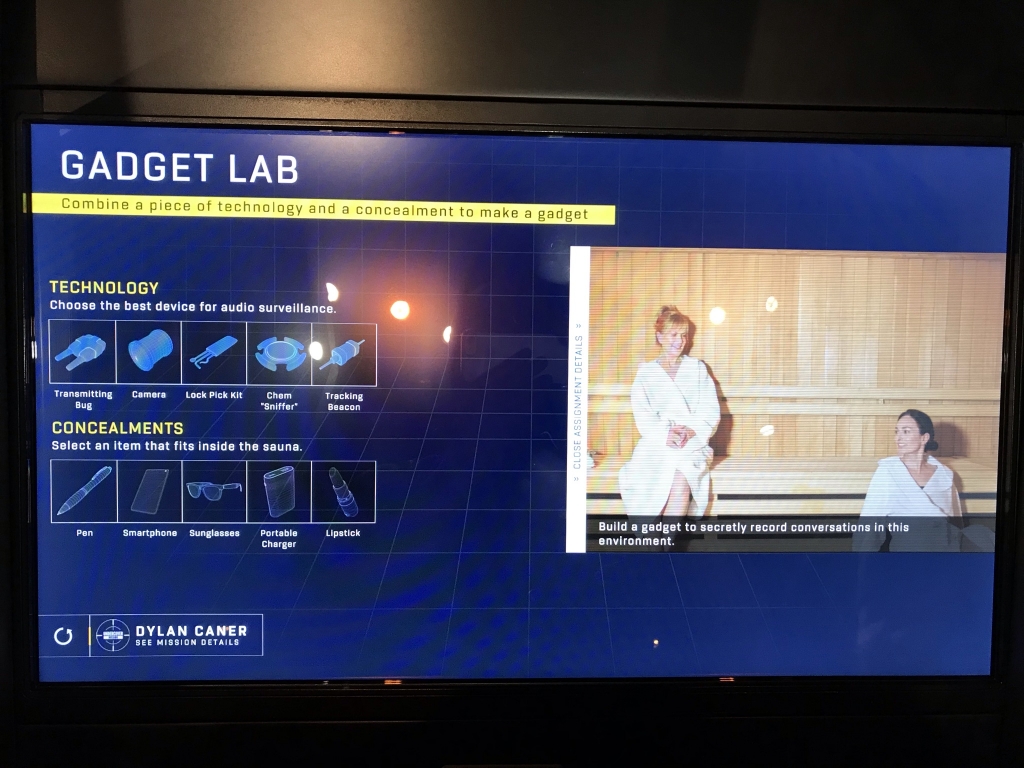
One of many parts of the spy game you get to play.
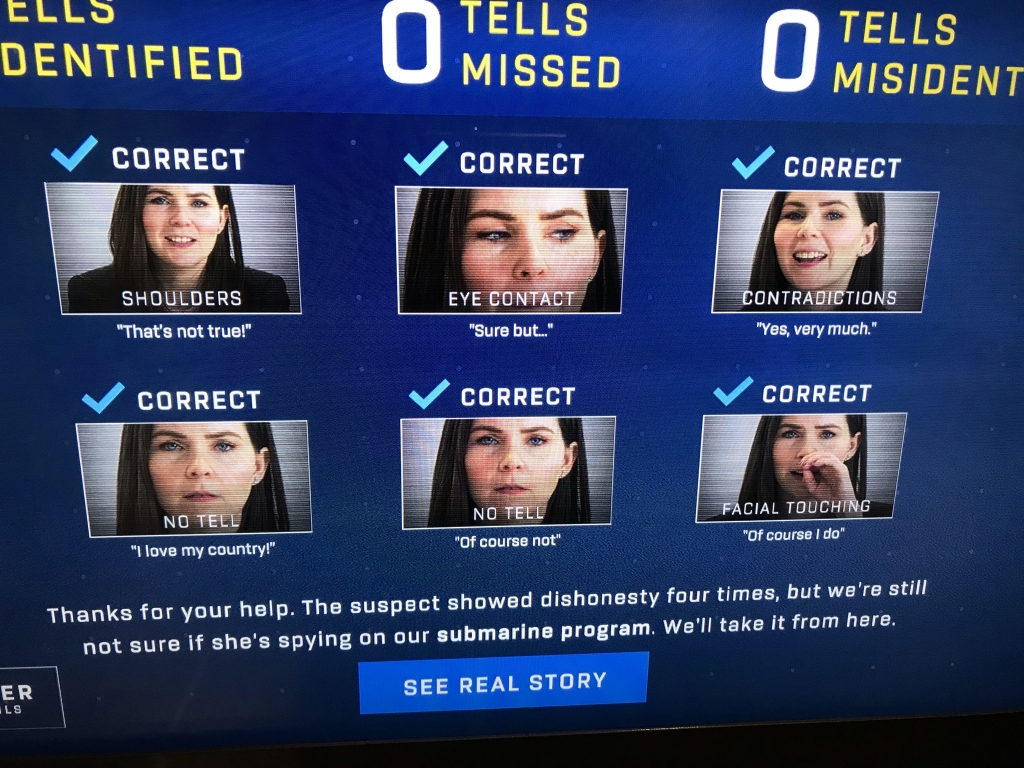
Can you tell when someone is lying to you?
One of the first halls you go through is all about HUMINT--HUMan INTelligence--introducing you to several real life spies. Each one has a person-high screen showing a short film about that spy in a loop. Some of them are about modern-day spies, like Morten Storm, a Danish convert to Islam who was a radical Islamic extremist for a time, but later privately changed his beliefs and secretly worked for Danish intelligence, providing them information on what his extremist circle was planning. Others are about historical spies like James Lafayette, an African-American who provided American patriots information on British military plans during the Revolution, and Dmitri Bystrolyotov, who spied on Western European countries for the Soviets between the World Wars only to fall victim to Stalin's purges and wind up in a gulag. The films on the modern spies consist of news clips and interviews; those on the historical ones are of interpreters playing the roles of the spies and telling their stories.
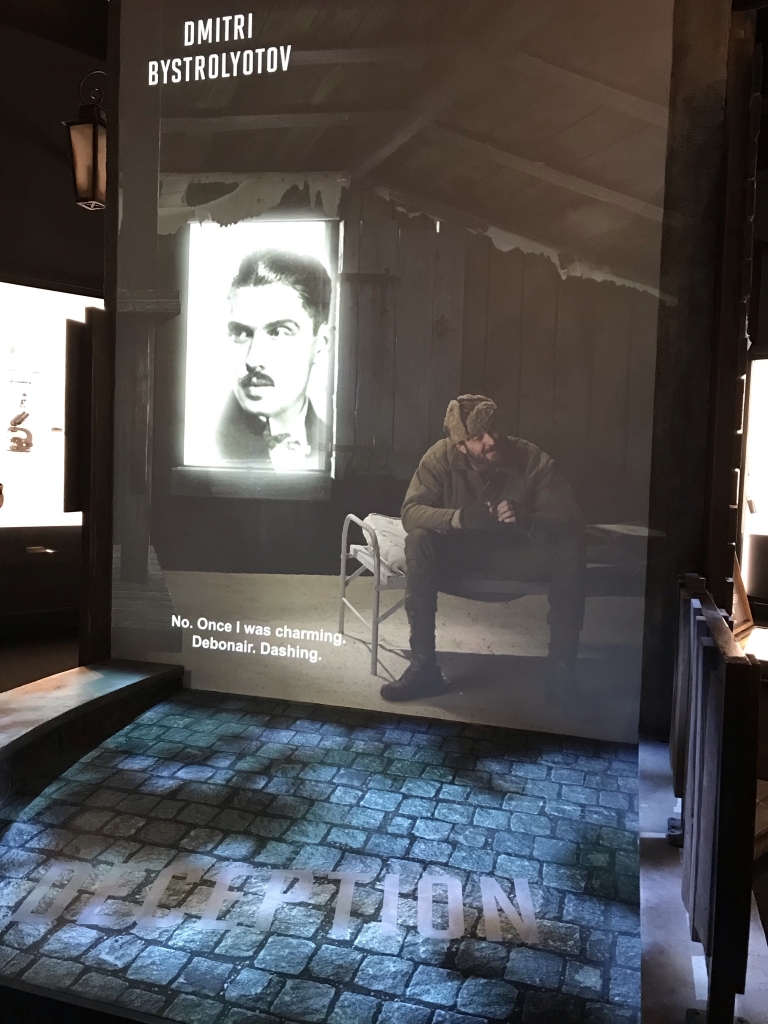
Dmitri Bystrolyotov was a multi-talented, multi-lingual, cosmopolitan world traveler who provided the nascent USSR with valuable intelligence on what Western European governments were up to during the interwar 1920s and 1930s, including the UK, France, and Germany. But in 1937, he met the same fate as so many other loyal Communists, finding the political winds had turned against him, and getting thrown in a gulag on a trumped-up charge. He was released after 17 years, by which time the years of torture and rough conditions had made him an invalid, but had secretly written an essential account of life in Stalin's gulags.
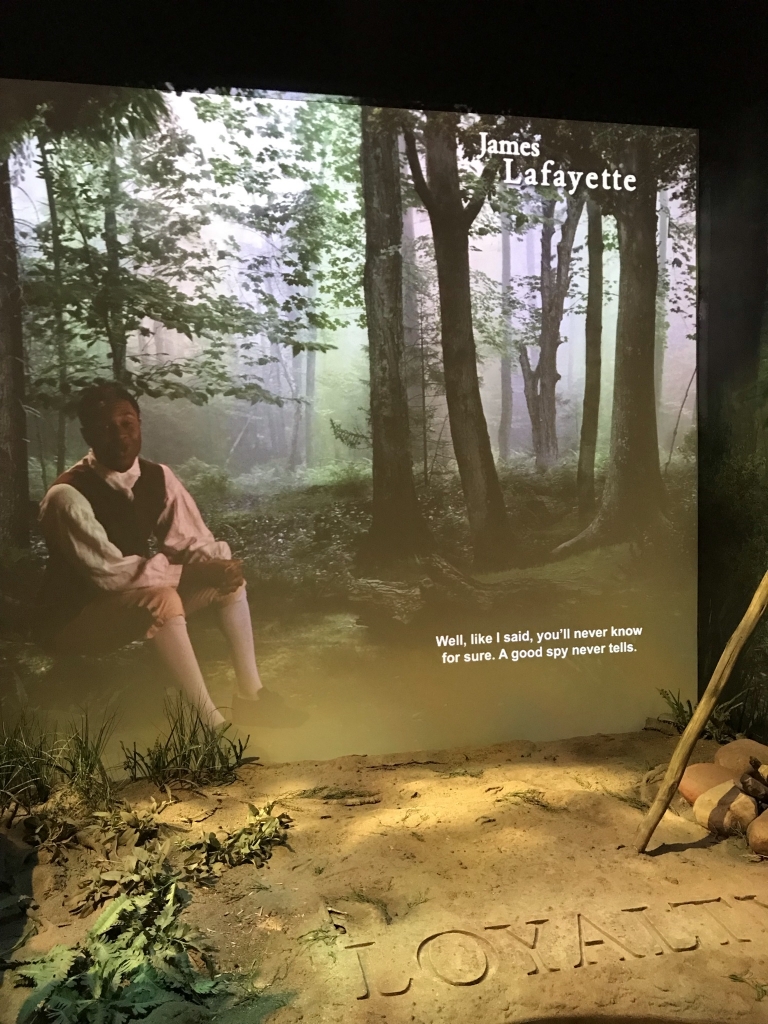
James Lafayette had been a slave, but earned his freedom during the Revolutionary War after working as a double agent, hanging around British military encampments and reporting what he heard back to the Americans. The American unit he had been working for was under the command of the French Marquis de Lafayette, and so after winning his freedom he took the Marquis' surname as his own out of gratitude.
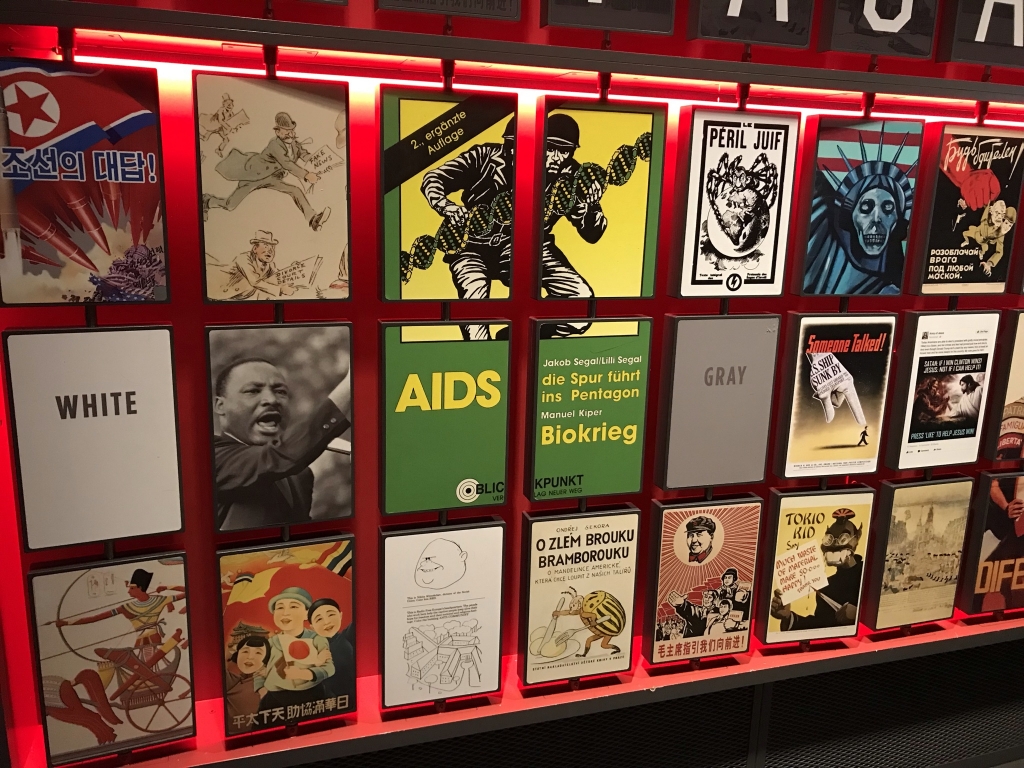
This exhibit is all about propaganda, with each tile showing a real-life example of each. There's "white" propaganda, which is upfront and honest about its source, "gray" which doesn't admit it, and "black" which actively pretends to be made by someone it's not.
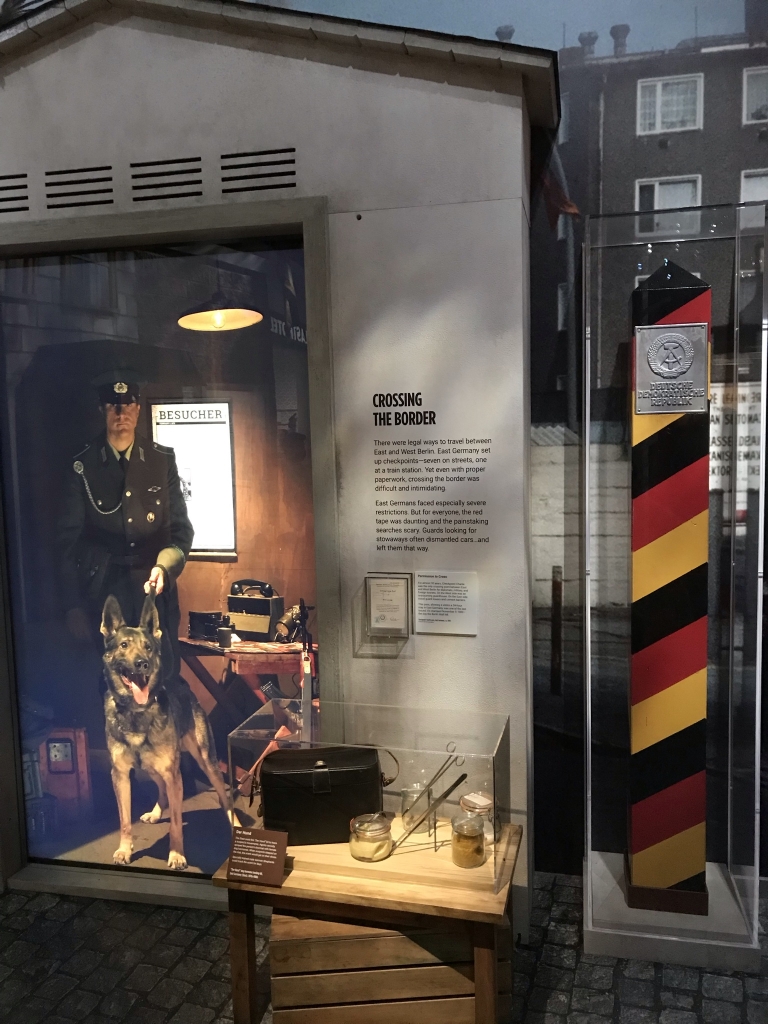
After walking in the shadow of the past a year ago in Berlin, here's a recreation of one of the erstwhile border checkpoints. On the sign it says "East Germany set up checkpoints--seven on streets, one at a train station." Of the seven on the streets, one was Bösebrücke, which was the first to fall in 1989, and another was the more famous Checkpoint Charlie. The one in the train station was Friedrichstraße; I've been in that station, and there isn't much there to indicate that it was once a border crossing.
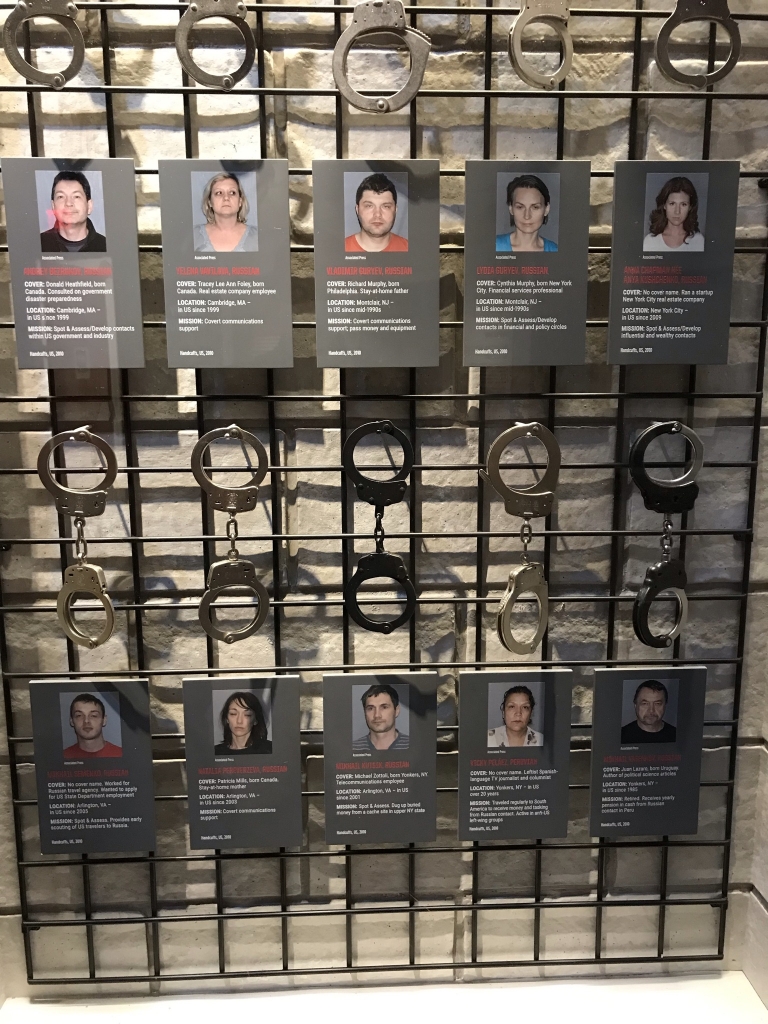
These ten Russian spies, known as "illegals" due to their operating outside laws concerning espionage, had been living in the US under fake identities for years when they were unmasked in 2010. The incident was an inspiration for the TV series The Americans.
I didn't want to take up too much space rambling about everything I saw in there. If you're ever in DC, you have to check this place out.
After the museum, it was about time to eat lunch. There were a great many food trucks set up on the National Mall. It was hard to decide which one I wanted to go to, but I picked Master Chef Touch where I got a delicious gyro sandwich.
Where to go next...I was a little curious to see what was in the Smithsonian Castle. This wonderfully designed building, which predates almost everything else lining the Mall, was the original Smithsonian Museum before all the others opened. Now, there isn't a whole lot of interest. It seems to be the Smithsonian Institution's administrative offices and its visitor center, a modest café, and a handful of exhibits about the Smithsonian--a meta-museum if you will.
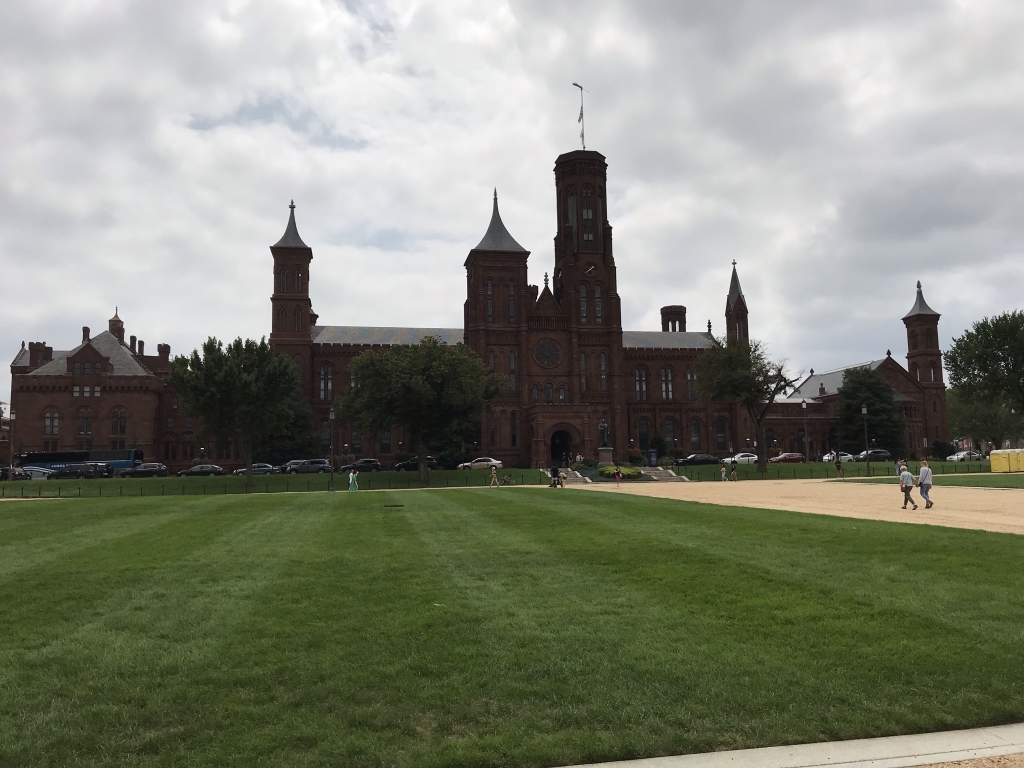
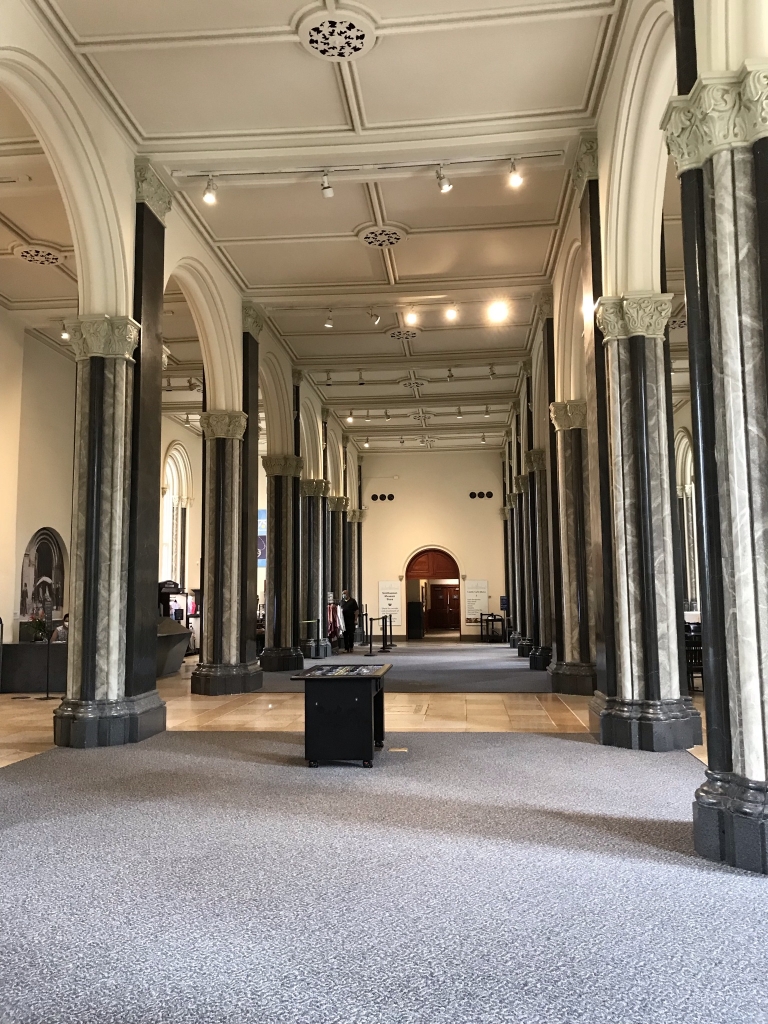
The inside of the castle was worth a quick look.
Time for one more museum before I had to catch a train back to BWI. Now I had the same dilemma as yesterday: Natural History or American History? Since I'm more and more trying to prioritize depth over breadth--that is, picking spots to deeply focus on rather than trying to cover as much ground as possible--I decided to return to American History and see what I missed the day before.
National Museum of American History, Revisited
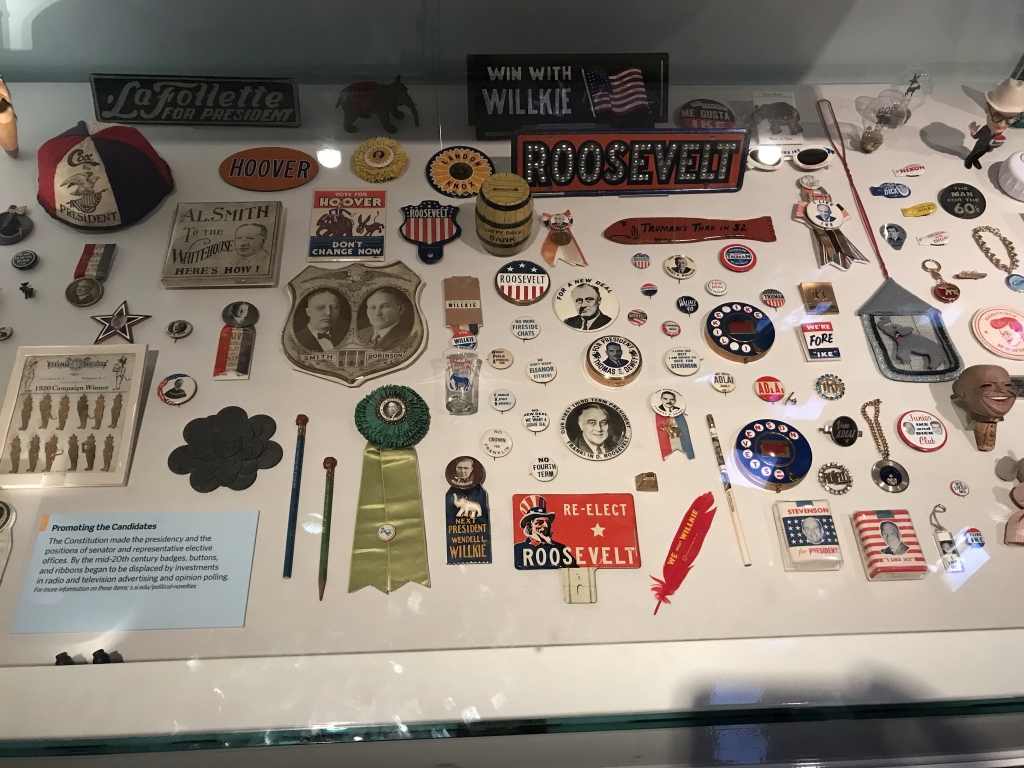
From a hall about presidential elections. In this long case they've got memorabilia from American Presidential campaigns, going back to the mid-1800s. The stuff you see here is from the middle of the last century, including FDR and his various unsuccessful challengers, like Wendell Willkie and Alf Landon, and Dwight Eisenhower who presided over the prosperous '50s.
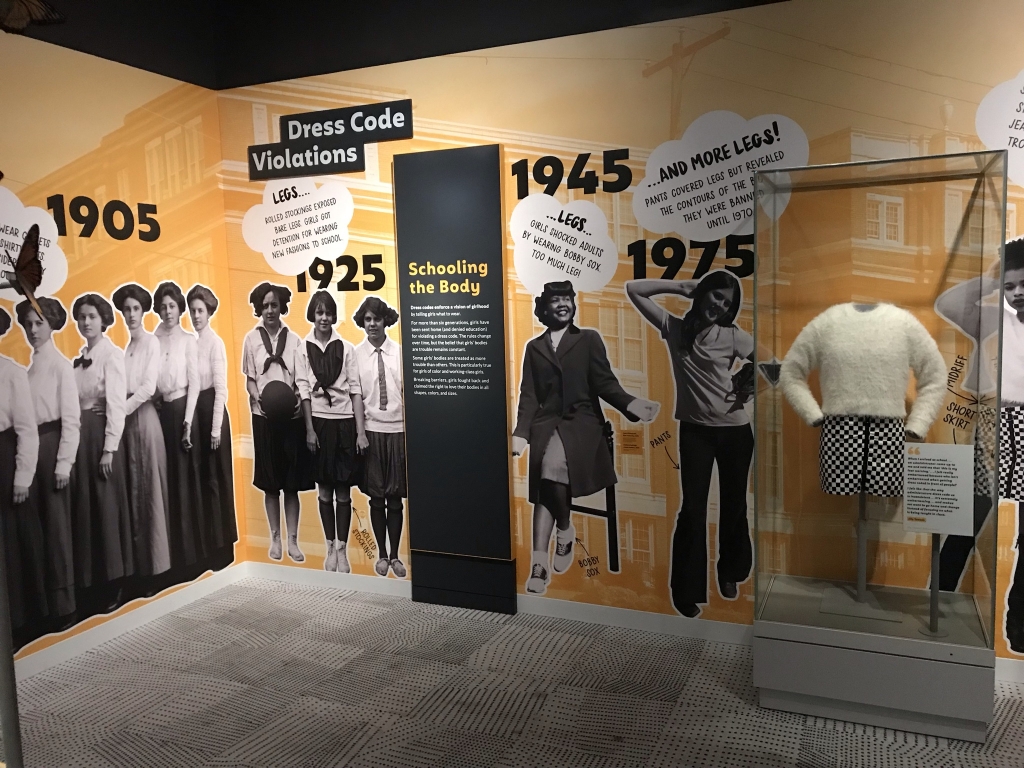
This is from "Girlhood (it's complicated)," the newest exhibit at the museum.
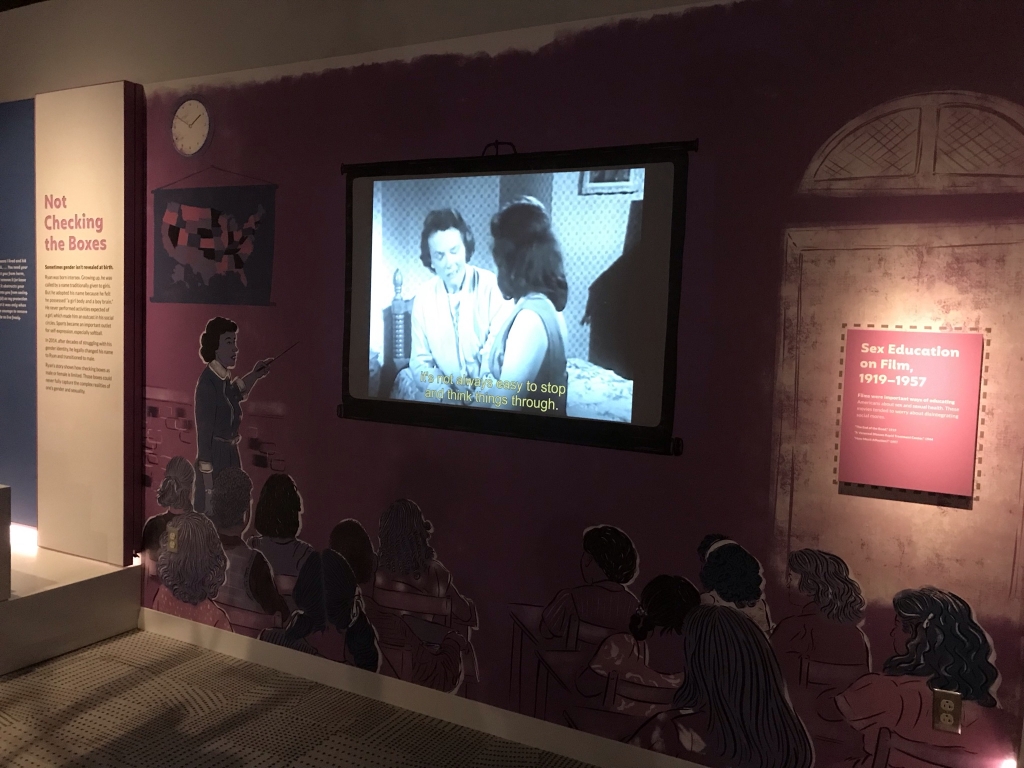
Another from that same exhibit, one of those retrospectively-godawful '50s educational films that tried to teach teen girls about sex.
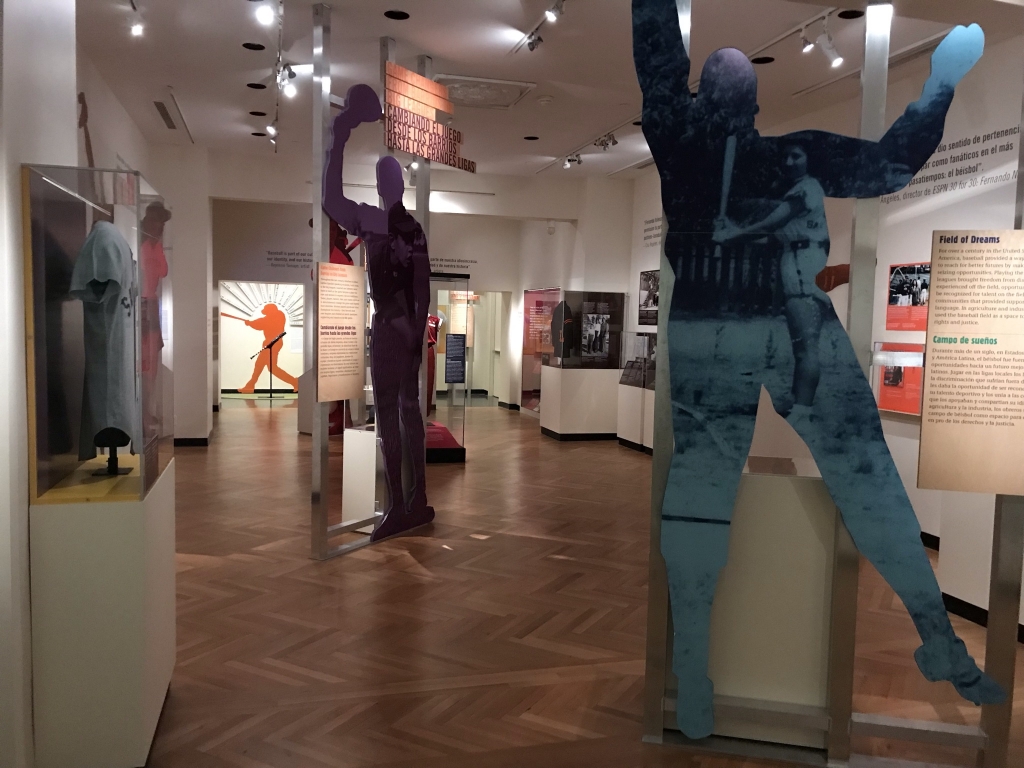
Moving on, there's another hall about how Latin Americans made their mark on that quintessentially American sport, baseball.
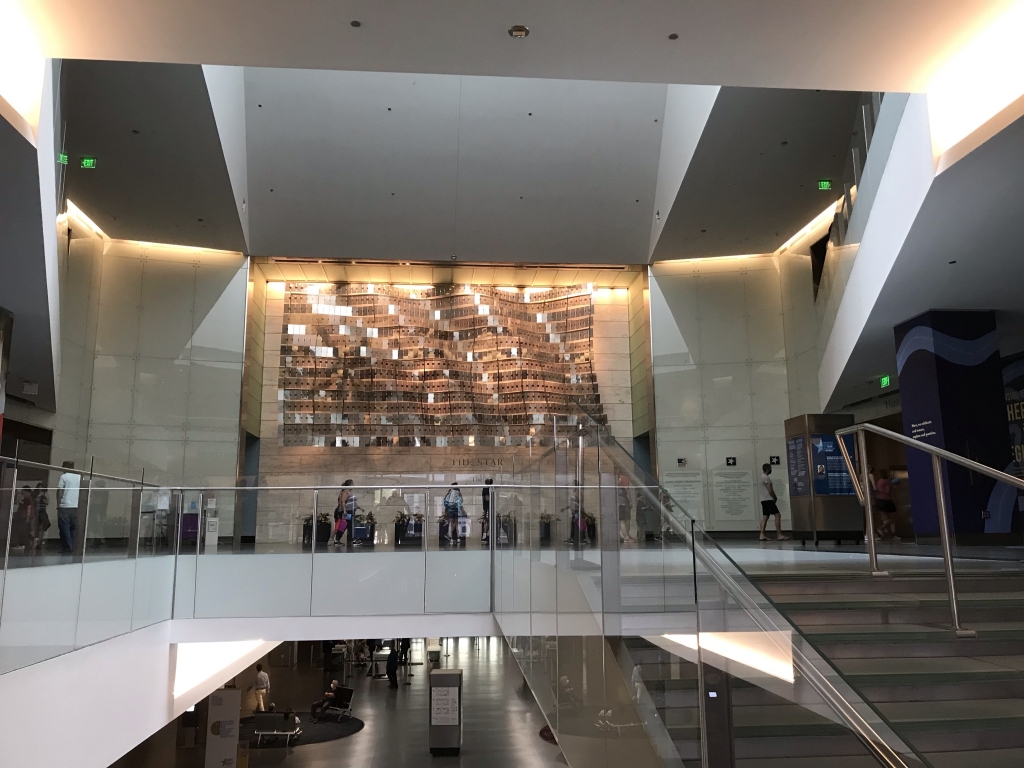
Last thing to see today: behind that wall with the metal flag on it, there's a very real flag. Not just any US flag but specifically the original Star-Spangled Banner, the very same 15-star, 15-stripe flag that was flying over Fort McHenry in 1814 and inspired Francis Scott Key to write "The Star-Spangled Banner." They have to keep it preserved back there, away from too much light, to protect the by-now-fragile fabric.
What I saw that day was about a third of the American History museum, and even that certainly took awhile to go through. It must have been two hours just for those parts. If you're planning a trip to DC, just going through one Smithsonian museum requires you to set aside half of your day for it, if you want to see the whole thing in one visit.
After I was finally done with that museum, it was a bit of a scramble to get back to Union Station by way of two Metro lines, but I got there just in the nick of time to catch a MARC train back to BWI.
Looking back, this was a great trip. There's a lot I wish I could've seen and done but didn't have time for; I never took a White House tour, visited the Library of Congress, ate anything with mumbo sauce, or listened to go-go music. Like I mentioned before, I'd been to DC before on family trips which mostly consisted of going through Smithsonian museums and looking at landmarks like the Lincoln Memorial and Washington Monument (and of course that brief glimpse in 2016). This time I really got to visit the city where people live, which I suspect many Americans don't even know exists.
But of course the tourist stuff is still worthwhile, especially the Smithsonians. I'm sure the tours of government buildings are pretty worthwhile too, which is why I'll have to do one whenever I come back someday. As always, there will, of course, be a next time.
